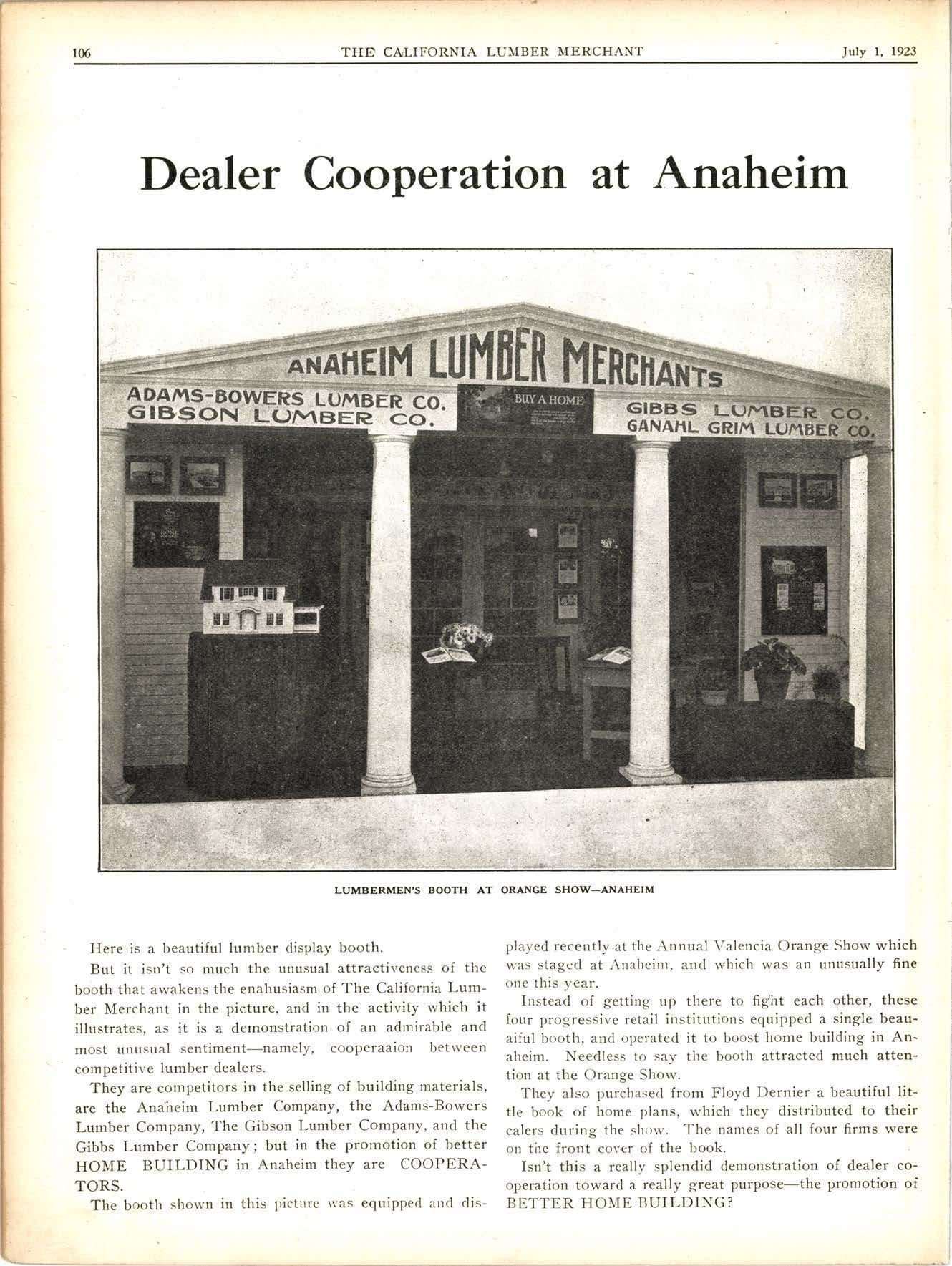
3 minute read
Brief History of Lumber Drying
Few people 'fully realize the gr,eat extent to which the kiln drying of lumber has influenced and developed the lu,mber industry to the high position it enjoys today among the nation's leading indistry. Even some lurnbermen are prone to apparently believe that artificial dryin,g came into ,commercial practice about 25 to 30 years, ago, which is of course a fallacy. Some of the literature that flits about occasionally evid'ently attempts to convince people that the dry kiln arrived with the airplane or that it is an enterprise resulting from the world war. Which is only imagination running wild.
It is a positive fact that nothing strikingly new in the method of drying lumber has been economically appli,ed to com'mercial practice for more than two decades. Despite the literature that has heralded new methods that have revolutionized the drying of lumber. Credit belongs only to those who are the most deservin,g and it is due the pioneer kiln 'builders who discovered the principles now so successfully u,sed and established the basis for further developement by several kiln manufacturers, the Forest Products l.iaboratory and others. Th'e three essential factors in lumber drying remain as originally discovered, namely, Heat, Humidity and Circul,ation. These three fa,ctors have a'bout 1870. Though somewhat cru'cle when compar,ed to the present practical and so highly economical insiallation, it gradually grew into favorable prominence during the 80's. The builders kept pace with the changing and enlarging,mill conditions and developed the dry kiln to meet deman,ds so that from l89O to 1900 it became, a valuable part of the manufacturing equipment in some sections. At this time it was sb decidedly apparent to many mills that their dry kiln boards indicated a difference between profit and loss. In these earlv days when. the lumber industrv was young the dry kiln-through sheer merit proved itseif a new sourc,e of increased profit.
The systems of kilns used from 1880 to 1900 were in principle about as they are used at the present time. These are the "Blower" or forced draft kiln, the "condensing" kiln and several systems of "ventilated" kilns which includes the "moist air" type. Im,provem'ents have been made and are being made in all three types. There are, however, a variety of makes working under each general system. Yet all differing in many details. The essential factors used in drying lumber the past gen,eration are still basic, and, the principle is pr'ofound. Mature knowledge, ripe experience, sound judgment, economic, dependable and practical dry kiln installation are of immeasurable value to the lumlber manufacturer.
Improvements will continue to be made andt details developed to the finest simplic'ity to'make the dry kiln more always been used and they will continue to be used as long as lumber is kiln dried.
Experimenting is the evil of modern business progress. It stifles individual and collective effort. It creates waste. degrades the value of a substantial produ.ct an'd, deprives an honest business of its moral right to live. The buzzing of the idealist, theorist and faddist can be heard frequently about new patents and the unfolding of the mysteries and complications ,of dry kilns and the drying of lumber. No other branch of the lumber industry would tolerate these things. There is no mystery about logging, or about milling, or even in the selling of lum,ber.' Neither is money wasted upon experimenting or the smooth talk of the unknown and the impractical.
Older lumbermen readily recall the time when it was difficult to find a ,market for the sale of boards at almost any price. Mills would square up the log and rthe side boards were treated in many instances as a by-product. The clear saps that now demand the highest markdt price were form€rly conveyed to the burner, sometimes sold as slab wood or possibly cut 'into boards and shipped green or air dried and disposed sf at a price s'lightly abdve the cost of transportation.
The dry kiln came into commercial use, in a limited way, effici,ent and serviceable to the manufacturer and the kiln operator. The proper use of temperature and humidity is being emphasized and the necessity of these more clearly defined. Also the tem,perature regulator, the psychrometer and the Humideik, the use of stea,m sprays, scales and heaters for obtaining exact mo'isture content and many other similar devices that greatly ai,d in the modern method of seasoning lumber.
The service of a good kiln operator is highly essential to secure the best results in drying lumber. It is not necessary that the operator be a technical €xpert, though many operators are very proficient in their work. He should know when to raise or to lower the temperature andr humidity and to see that the lumber is properly stacked upon the trucks, also that as even and continuous temperature is maintained and to know when the stock is dried to the proper moisture content. Some dry kilns automatically maintain a proper balance of temperature and humidity and are much easier to operate than others. No dry kiln can operate itself. It depends upon the operator.
The assurance of being a helpful part in the conduct of a business has inspired many men to perform their best work at all times. Encourage and support the dry kiln operator. His work aids other departments to accomplish better ,results. Through cooperation of all workers a business grows bigger and better. In that there is satisfaction.
(From "Moore Facts" published by Moore Dry Kiln Co.)

Reprint from the Humboldt Herald, Eureka, California










